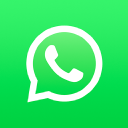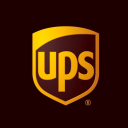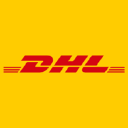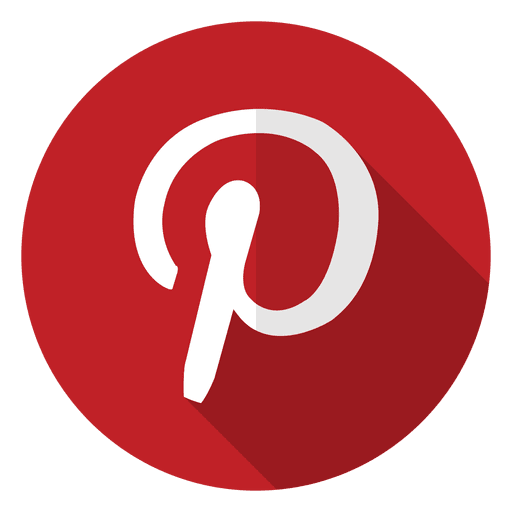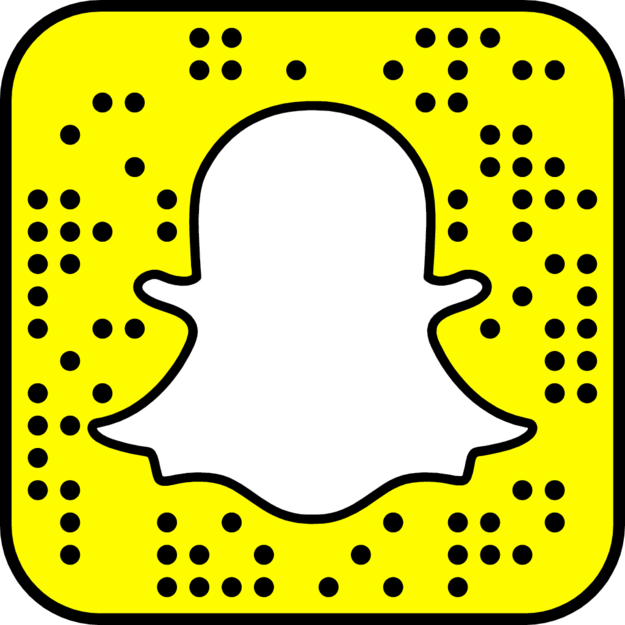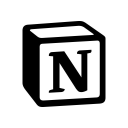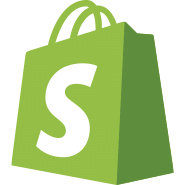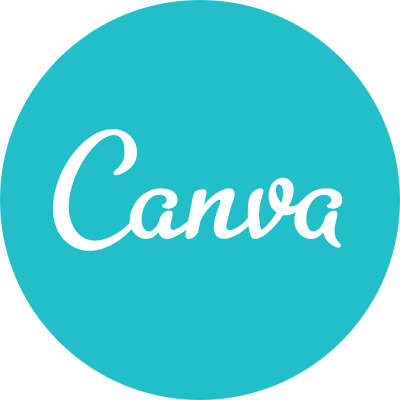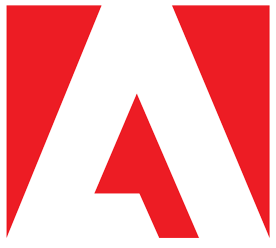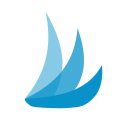On Starting An Indian And South Asian-Inspired Fashion Brand
Hello! Who are you and what business did you start?
Hi all! My name is Niki Shamdasani and I’m the co-founder and CEO of Sani, a South Asian-inspired fashion brand. I started the company about three years ago with my younger sister to make the best of South Asian fashion accessible in the US. Each Sani piece is distinct and crafted with the highest commitment to quality, design, and experience. Our collections are made in small batches by real people, using traditional craftsmanship and techniques.
We strive to be as responsible and sustainable a business as possible (and we’re still learning how to do it!). We work on considering all of the costs when creating fashion, not just the tangible ones. That includes operating with ethical manufacturing partners, reducing inventory waste, and batch shipping to reduce our carbon footprint.
We started off focusing primarily on cultural formalwear - pieces that could be taken from an Indian wedding to a gala. Our target customers were those first and second-generation South Asian Americans. We spent two years traveling to pop-ups and headlining fashion shows to get the word out about Sani and our momentum sped up faster than ever before at the beginning of 2020 when we launched on Rent the Runway as the very first South Asian fashion brand on their platform. Our outfits were rented out within a few days, we got press from places like Business Insider and NBC, we had an unprecedented number of orders on our main website, and we were offered major opportunities that were going to take the business to the next level.
When the pandemic hit a little over two weeks later, having a formalwear business meant that our sales suddenly went down to 0. We accelerated our product roadmap and released new items like loungewear, all still with South Asian inspiration at their core. Through sales of the loungewear, we recently had the best Q4 ever and believe Sani is poised to become an even bigger business than we had previously imagined.

What's your backstory and how did you come up with the idea?
I came to Sani after spending time in consulting and then venture capital. After graduating from the University of North Carolina at Chapel Hill as a Morehead-Cain Scholar in 2015, I spent a brief period of time at Deloitte’s federal strategy and operations arm. I then left to be the Chief of Staff at Matter, a startup accelerator for early-stage media companies. I started in San Francisco and was asked to move to New York to start the accelerator’s office there. It was an incredible opportunity to be a part of so many startup journeys and wear tons of hats as we grew the accelerator itself.
Intention and strategy are important parts of running a business, but at a certain point, you just have to act.
My sister and I initially thought of Sani as a side project to meet our own needs to access better South Asian fashion from the US. My two sisters and I were attending a family friend’s wedding in 2017 and had outgrown everything we had in our closet. Indian weddings have 3+ events, which meant we had to collectively find about 9 outfits for ourselves. We traveled 2+ hours to get to various South Asian hubs in the US (think Atlanta, GA, Edison, NJ, etc.) with Indian clothing stores but most styles were outdated and the ones that were not were of poor quality for their price.
We video called our grandmother in India while she took us around to boutiques but it was hard to tell what would work for us from afar. We even went to one of the few online stores selling Indian clothing in the US and ordered off there, but what arrived was not at all what we saw in the picture. The process was time-consuming and expensive and ultimately, we cobbled together what we could. When we talked to our friends and family members about how they would shop for cultural formalwear, we learned that 82% of South Asian Americans waited to go abroad to buy their clothing. Even then, it was an often unpleasant experience, especially for first and second-generation South Asian American women.
So we decided to create the designs and experience we always wished we could find. We started off making a small collection of 15 sample pieces, all in our sizes so that we could use the designs if no one else liked them. We knew we had hit on a special idea when we had first and second-generation South Asian Americans like ourselves that saw our designs and told us it was the first time they had seen so many cultural pieces they loved. Shopping for South Asian clothing is usually a mother and daughter affair so what made us feel EVEN more conviction was when their moms got excited by their daughter’s excitement. We still had so much more to test and I wouldn’t say there was a single “aha” moment - it was more of a series of moments that continued to keep us going.
Neither my sister nor I had a fashion background, but when our mom was growing up in India when she couldn’t find clothing she liked, she would make it herself. She and other family members guided us through the start of Sani and beyond that, it was about trial and error.
Shortly before launching Sani, I had left my job at the startup accelerator in New York to find a new full-time job in North Carolina, where my sister/co-founder was still in high school. I had saved up six months of living expenses to help with the transition and felt I could find another job at that time. However, I spent more time on Sani than anything else and ended up taking on small part-time and freelance gigs to pay the bills. We wanted to build Sani with intention and taking on those gigs gave us the ability to do that.
Take us through the process of designing, prototyping, and manufacturing your first product.
My sister and I started our design process in my small New York bedroom when she was staying with me for a few months over the summer of 2017 during an internship. Every night after we both came home, we worked to come up with a “portfolio” of sorts - really it was a cobbled-together mood board with very juvenile sketches of some ideas. It came together from our own preferences, as well as what we had heard through many, many conversations with friends and family about what they wished was out there.
A few months later, I accompanied my mom to India, where she was visiting family, and we decided to take some time to go to fabric stores. She had grown up visiting all sorts of these stores and had some ideas of where to start, but we asked others where to go as well.
Visiting the fabric stores was an incredible experience. I had no idea how much there was to South Asian craftsmanship. There were techniques that I had seen from couture pieces to stores like Anthropologie and Free People, but I never knew they were South Asian in origin. We let the fabrics guide the next step of the design. If we saw a fabric that suited the portfolio, we would get it. If we saw another fabric that was outside of what we had imagined, but was beautiful, we got it and resolved to design around it.

From there, we had a lot of fabrics, but we did not have a manufacturer. Before arriving in India, we had Googled our way to find some manufacturers in Delhi. We also had asked every person we knew if they had recommendations. Finally, there were a few areas of the city where we knew we might find someone. All three tactics led to a few manufacturer possibilities.
After visiting people’s factories (or home studios) to make sure they met a certain level of ethics, we gave each of the remaining leads a few designs to make from our fabrics. Even as fashion newbies, we quickly were able to cull down who we were going to work with from their samples. Even if we didn’t know which stitching method or lining was better quality, we could quickly try on a piece and feel which ones were made better. Every single sample helped us further improve the next piece and create our quality control checklist.
Through this whole process, we started with a collection of about 15 sample pieces. We operated on a Made to Order model, which meant that we would show people the sample pieces and take orders off that. We didn’t think too far beyond that to packaging, trademarks for our name, finding a name that we could reserve on all social handles, etc. For us, it was just about whether we could make some cultural formalwear that our friends and family would love. Including flights to India, samples, and other incidentals, we were in for about $10,000 to start. My sister and I started our “portfolio” in July of 2017 and in October 2017 we had our first pop-up and launched our Instagram with 15 samples.
Describe the process of launching the business.
We officially launched Sani in October of 2017 through an Instagram account. The Instagram account was meant to legitimize the brand, even if we still considered it a side project, and we also thought we’d start to see the sales pour in from there. After all, we knew tons of brands that sold off Instagram. What we didn’t realize was
- An Instagram account alone didn’t legitimize us.
- We had to build up a lot of trust for someone to buy a $400 (our average price point) formalwear piece from us.
- We had not taken into account that even though our user was a first or second-generation South Asian American, the customer was usually their mom. We were not thinking strategically about how to get moms to trust us.
Soon after we held our first pop-up and invited the mother-daughter duos we knew to stop by. And it worked. We began to attend pop-ups more frequently from there, starting in our home state of North Carolina and growing to other cities along the East Coast. We concentrated on the ground game in North Carolina to start because we hypothesized that if we could build a strong community there, we would organically grow more quickly. After all, the people wearing our formalwear to weddings and other bigger events were often traveling out of the state for those events.
We also set up our website two months after launch because people were asking for it and we knew it would help with legitimacy. Shopify made it really easy to set up but we didn’t put enough weight on getting the right eCommerce photos with detailed product shots and movement until later so our website almost looked like an extension of our Instagram.

During this whole time, we bootstrapped the business from my savings, but received grants along the way, starting with the NC IDEA grant for $10,000 which we received about 8 months after we had launched. Non-dilutive grants have been a really useful tool for our business when we want to de-risk a new project. That NC IDEA grant helped us put on our biggest event yet, a fashion show for the launch of our collection in September 2018. We had over 300 people at the show and that was when we began to see a lot more customers. The fashion show was meant to be a full-on production showcasing South Asian dances, foods, and more. It further legitimized the brand and people started to recognize the Sani name.
The most important lessons we learned from the process of starting were to move quickly and to constantly stay in touch with our customers. We didn’t move quickly with Sani for a long time, even after launch, partially because we initially envisioned it as a side project and partially because my sister and I were figuring out how to work together.
When we really started to get moving, which included nixing ideas we loved that really were not working, Sani started to grow much quicker. That included our recent pivot to loungewear. The pandemic obviously devastated our formalwear business and we had not planned on expanding product lines for a while longer. At first, we were worried that we didn’t have the foundations to properly expand. We did it anyway and the loungewear has helped grow the business faster than ever before. We also learned that when you’re launching, it’s not about one day or one moment so don’t worry as much about the launch DAY as the launch STRATEGY. It’s about building momentum and you have to think a lot about maintaining that beyond launch day itself.
Since launch, what has worked to attract and retain customers?
Our best sales channel before COVID was in-person experiences like pop-ups and fashion shows. It allowed new people to see why our designs, quality, and experience stood out. We were building up our digital channels at the same time, but I would highly advise founders to get in front of customers (where possible), especially at the beginning.
The inflection point for our digital traffic came in February 2020 when in the span of two days a large South Asian influencer posted about us and we launched on Rent the Runway as the first South Asian fashion business on their platform. Our rentals were completely booked out within a couple of days and we had an unprecedented amount of interest directly to our website as well. At the very beginning of Sani (when we still thought of it as a side project), we had listed out where we thought our clothes should be, and Rent the Runway was at the top of the list. The partnership made sense for so many reasons, including our like-minded values and the customer base that it allowed us to access.
It’s hard to say where that momentum would have led us because a few weeks later the world shut down due to the pandemic. All that said, we are excited about several other partnerships in the works. We don’t have enough data points to say partnerships are the best growth strategy for us but the Rent the Runway partnership was a major growth point for our business. We continue to think about where our ideal customers are and how we can work with other businesses to serve them in new ways.
When the pandemic hit, my co-founder/sister and I started putting time into TikTok. Right before the lockdown in March we had a video go viral and saw the impact it had on traffic and sales. Having so many other business imperatives put on hold by the pandemic gave us the time to experiment with TikTok. We continued to grow our presence and had many other viral videos.
People weren’t really buying formalwear and we had not released any other product categories during our peak TikTok periods, but we have still seen results and I believe we’re going to see TikTok’s impact into the future. We ask every customer how they heard about us after they purchase and we have heard “TikTok” more times than I can count.
What worked really well were process videos - showing people how we went from inspiration to a sketch to a full-on product. Those videos seemed to be really satisfying for people. Eventually, people stop liking the same concept over and over again, even when applied to different products, so we had to come up with new video themes. We keep a close eye on trends and how we can adapt them to Sani. When one trend video hits, we see if there’s a way to turn it into a series.

Since the end of November 2020, we have also started investing in social media ads. When it came to our formalwear, we wanted to build more trust and awareness of the brand before venturing into social media ads, but we launched two new product categories during the pandemic that have lower price points than the formalwear so we are excited to see how they will perform once we go beyond Facebook’s learning phase.
Also, we have sent out our loungewear to many influencers, specifically with a focus on founders and creatives. Again, we have not hit on what effectively scales with the influencer strategy but we have broken even on the investment so far.
How are you doing today and what does the future look like?
Just like many other brands, Sani took a huge hit in 2020. As a formalwear-focused business, the pandemic took away all of the major use cases for our business. The launch of new product verticals like masks and loungewear made up for some of the lost sales, but we were not able to release those items until Q4 of this year due to supply chain issues. Still, we are optimistic based on the performance of those categories and will continue to build out our non-formal wear while being ready for when people can attend formal events again.
Despite 2020’s challenges, we are close to profitable, though not quite there as yet. Since the business has been bootstrapped, for the most part, we have worked to manage our finances in as efficient a way as possible. With our loungewear, we purchased the smallest order quantity that we could to first prove out that it was a viable category for us and customers would like the product. It has led to stocking out of many popular colors and sizes, but for us, it was still worth taking a more measured approach. The more measured approach also allowed us to understand key metrics and how to improve them for future orders.
Our gross margins for the loungewear were ultimately about 30%, which is much lower than where they should have been, but we are adjusting a few different levers for round two to bring that up. Those levers include shopping around with manufacturers and potentially adjusting prices. A predictable customer acquisition cost will also help us determine what other levers we should adjust.
When we were focused on formalwear, our repeat customer rate was about 20% with an average lifetime value of $1500. Our customer acquisition cost based on the in-person marketing we were doing was about $200 and the margins were about 50%. We still believe in the niche, but my co-founder/sister and I are personally so excited about creating products that we can wear every day (like loungewear) so our long-term goals for the business involve continued product expansion. We will still operate under the umbrella of drawing inspiration from South Asian craftsmanship and techniques, but this expansion to new products has opened up a great new audience base for us in addition to the first and second-generation South Asian Americans that we were previously serving.
Today the majority of our sales come in through our online store. We have a small rental income stream through Rent the Runway as well, but our launch with them came just before the pandemic so it is not a significant stream. Pre-pandemic we were looking into wholesale avenues for our formalwear, but those discussions were cut short. However, we still plan for that to become a larger part of our business, both for formalwear and non-formalwear, when we have a better idea of how people are shopping post-pandemic.
In addition to wanting a successful business in financial terms, our long-term goal is to increase the mainstream visibility of South Asian culture and craftsmanship. There are so many South Asian embroideries and techniques used by designers, but they are not called out as so. It is important to us to change that. That is why the mainstream exposure we have gained through platforms like Rent the Runway and TikTok have been so important for our mission.
Through starting the business, have you learned anything particularly helpful or advantageous?
One of the biggest lessons I have learned is to make sure your production foundations are strong. We were working with a lot of smaller manufacturers when we started and as soon as the order volumes began to increase, the quality control decreased. When we went to larger factories they wanted tech packs and other very basic documentation that the smaller factories had never used. It really slowed down the process of scaling up and it resulted in some major production errors that were on us to fix. From the beginning, we had acted as if we were going to start working with larger factories in terms of how we proactively set up our design process, even when we worked with smaller factories, we would have been much better off.
Also, sales seem to solve problems. We spent a lot of time and money on marketing and branding components of the business in the beginning and, while I believe branding is important, we did not have the sales to justify that investment. Also, as we learned more about our customers and what was/wasn’t working, we naturally adopted a lot of that positioning that we had invested so much in. This brings me to another point - don’t stop talking to your customers.
At the beginning of our business, we did plenty of customer discovery and that formed the foundations, but as time went on, we lost sight of that and were always in sales mode with customers. During the pandemic, we restarted our regular customer conversations and it has been instrumental in helping us figure out how we keep moving the brand forward, from what designs we are choosing to make to the marketing decisions we are taking.
Finally, I believe we missed many opportunities by not moving fast enough. For example, we started Sani in 2017 when the influencer trend was at a high on social media but we did not want to get into the influencer gifting game because everyone in our niche was doing it. When we accepted there must be a reason why everyone was doing it, we deployed the strategy really slowly and took a long time to get the data points to understand what worked and what didn’t.
Recently we realized micro-influencers are working well for us. Taking our learnings from the first influencer round, we went all in and started cold DMing people and properly tracking the responses, which has really paid off for us. We think of TikTok this way too - when we saw the engagement when we first started, we did not move fast enough. We are correcting that mistake now, but we don’t have the same momentum we did before. When you think a strategy COULD work or you see it start to work, move quickly.
What platform/tools do you use for your business?
We use Shopify for our online store. It has been so important in making it easy for us to launch and grow our digital presence since it grows with you. We recently converted from a free Shopify theme to an Out of the Sandbox theme called Turbo and for the price of the theme, we have avoided having to pay a freelance developer to give us more customization on the website. In addition to the theme, our favorite apps are Grapevine (for our post-purchase survey), Infinite Product Options (to give customers an easy customization tool for our formalwear), and Toucan AI (for our chat feature). We use Loox for reviews and Smile for our loyalty program, but they haven’t been standout apps.
In addition, we use Klaviyo for our email marketing. It has made it so much easier to create and adapt campaigns and customer flows (from the abandoned cart flow to our welcome series). We use Later for planning and scheduling social media posts on Instagram and Pinterest, and Notion for our team wiki and day-to-day tasks. The notion makes it so easy to consolidate so many work contexts, from creating documents to organizing to-do lists, to managing your CRM.
What have been the most influential books, podcasts, or other resources?
The How I Built This podcast led to our partnership with Rent the Runway and the podcast continue to be a valuable guide. When I heard Jenn Hymen, the CEO of Rent the Runway, speak about how she cold messaged Diane von Furstenberg when she started the company, it inspired me to cold email Jenn. I told her about how the South Asian fashion market was underserved in the US and that we would love to partner to launch that category on Rent the Runway.
She responded and in February 2020, we launched. It was a really successful partnership for the few weeks before the pandemic and we are looking forward to continuing to work with Rent the Runway moving forward. In general, hearing how other founders started their businesses through How I Built This always inspires me to take some action with Sani. One of my other favorite episodes of all time was the Kodiak Cakes episode with Joel Clark. That guy has some real grit.
I also love Tim Ferriss’s podcast because it gets really tactical and, once again, sparks action. Learning from people in a variety of fields and professions helps me think more creatively. I regularly take my new book recommendations from the guests on his podcasts and those books provide the same inspiration.
Advice for other entrepreneurs who want to get started or are just starting?
I knew starting a business would be hard, but I didn’t know the extent of it. I thought that at some point when we hit on the right formula, it would start to feel easier. A few days before our deadline for getting a major order to a new customer, FedEx lost our shipment. There had been 100 obstacles already in making the order happen and I wondered if this was just a sign that it wasn’t meant to be. I had called a mentor for separate advice that day and he told me FedEx had lost a package of theirs that past week and he had to go to the distribution center to get them to find it. He runs a business doing $16+ million a year. I then realized that if it’s meant to be, it doesn’t mean it will be easy.
A huge asset during tough moments in your community and, in retrospect, I wish I did a better job of engaging with our community of advisors and mentors more regularly earlier. We have now started monthly emails to that network that includes requests for help, wins, challenges, and whether we are meeting our goals. However, it took us a long time to start sending that, partially because I was frustrated with and ashamed of our lack of steady progress. Having started it now, I can undoubtedly say that having the discipline to make those monthly updates helps you as much as it helps other people help you.
That monthly email is a big example of a step I didn’t take for a long time because I overthought it. In general, that is one of the biggest mistakes I see among fellow entrepreneurs. Intention and strategy are important parts of running a business, but at a certain point, you just have to act. So write out the tasks that you have been putting off because they seem scary and then take 1 step towards them every day. When it came to the monthly email, there was a week when I committed to writing just one section of the email a day. Break things down and make them happen!
Are you looking to hire for certain positions right now?
We will likely be looking for a part-time fashion designer shortly so stay tuned. Beyond that, we are always open to smart people proposing ways we can work together.
Where can we go to learn more?
If you have any questions or comments, drop a comment below!

Download the report and join our email newsletter packed with business ideas and money-making opportunities, backed by real-life case studies.

Download the report and join our email newsletter packed with business ideas and money-making opportunities, backed by real-life case studies.

Download the report and join our email newsletter packed with business ideas and money-making opportunities, backed by real-life case studies.

Download the report and join our email newsletter packed with business ideas and money-making opportunities, backed by real-life case studies.

Download the report and join our email newsletter packed with business ideas and money-making opportunities, backed by real-life case studies.

Download the report and join our email newsletter packed with business ideas and money-making opportunities, backed by real-life case studies.

Download the report and join our email newsletter packed with business ideas and money-making opportunities, backed by real-life case studies.

Download the report and join our email newsletter packed with business ideas and money-making opportunities, backed by real-life case studies.




